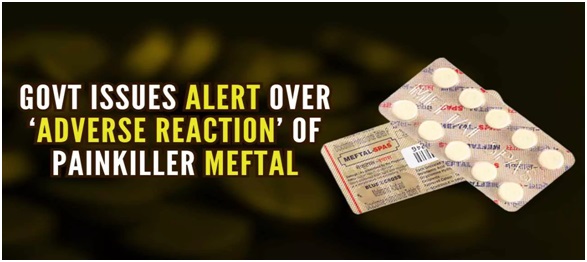Painkiller Meftal could cause DRESS syndrome (Financial Express)

- 07 Dec 2023
Why is it in the News?
Indian Pharmacopoeia Commission (IPC) has recently issued a drug safety alert for doctors and patients about the use of the commonly used painkiller mefenamic acid, popularly sold under the brand name Meftal.
Context:
- The Pharma standard body, Indian Pharmacopoeia Commission (IPC) in its preliminary analysis of Adverse Drug Reactions (ADRs) from the PvPI database revealed that Meftal can lead to Drug Reactions with Eosinophilia and Systemic Symptoms (DRESS) Syndrome.
- According to doctors, this syndrome causes a diverse array of clinical symptoms, anywhere from 2 to 8 weeks after initiating the offending drug.
What is DRESS syndrome?
- DRESS syndrome (Drug Rash with Eosinophilia and Systemic Symptoms) is an adverse reaction term that is currently used to describe a hypersensitivity reaction.
- Experts classify DRESS syndrome as a type 4 hypersensitivity reaction.
- It is a serious drug reaction affecting the skin and other organs, with a mortality rate of up to 10%.
- It manifests when the immune system excessively responds to specific medications, leading to a type 4 hypersensitivity reaction.
- This reaction can manifest with various symptoms across the body, including fever, abnormalities in blood, and inflammation of organs.
What are the symptoms of DRESS syndrome?
- Patients diagnosed with DRESS syndrome typically present with a rash, fever, and eosinophilia but can have a variety of symptoms including liver, lung, or kidney involvement.
- “DRESS syndrome should be suspected if a diffuse rash erupts and is accompanied by fever, facial edema, and enlarged lymph two to six weeks after starting a new high-risk medication.
How to treat DRESS Syndrome?
- The most important step to treat DRESS Syndrome is to stop the medication involved in the reaction, and sometimes, no further treatment is needed.
- Topical steroids can be given to treat the rash and in certain cases, further treatment is needed to protect the organs from damage, such as with steroids, which can be given either intravenously or orally.
- “Treatment with steroids can be needed for weeks or even months, and lab work is monitored carefully during this time.
- The average time to recovery is six to nine weeks.
